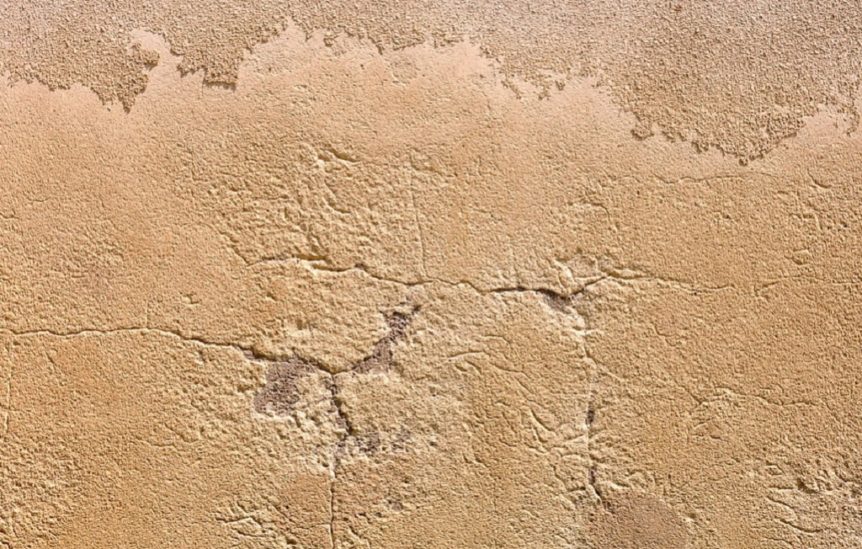Pool plaster damage happens over time, even in the most well-maintained pools.
However, noticing the earliest signs of this damage helps you to also uncover other issues your pool might be having.
The earlier you notice problems, the easier it is to fix the issue. Plus, this can reduce the chance of more costly repairs as a result of worsening damage.
Pool Plaster Delamination
First of all, this type of pool plaster damage isn’t something caused by you. Typically, it’s a result of either a poor plastering job or simply air bubbles forming during the plastering process. Over time and general wear and tear, small cracks let your water into the air cavity behind the plaster.
All of this happens simply because the plaster didn’t bond well to your pool’s surface. You won’t even know it happened until you notice the signs.
These can include:
- Bubbles or blisters on the pool surface
- Discolored spots
- Raised nodules similar to tiny volcanoes
- Pieces of plaster broken off and floating
- Craters where nodules have broken off
The only real solution is to re-plaster your pool. It can take a while before delamination causes significant issues, such as making your pool surface too rough to use or major discoloration.
Hairline Cracks
One of the most common types of pool plaster damage you’ll notice are tiny hairline cracks. Usually, these are nothing to worry about. However, once you notice them, it’s a good idea to monitor them over time to ensure they’re not getting larger.
Simple hairline cracks that don’t go deep are typically signs of the soil around the pool settling. This is completely normal.
However, these do create a breeding ground for algae. If you have trouble with algae buildup, it’s beneficial to patch the cracks to keep your pool cleaner.
Discoloration Issues
Often, pool plaster discoloration starts off so small that you might not notice it. Discoloration can be a sign of a variety of issues. From the water chemistry to algae, it’s important to pay close attention any time you notice your plaster changing color.
Most often, a chemistry imbalance is the culprit. Using too much or too little of different chemicals results in the water discoloring the plaster. It’s a good idea to use pool chemistry testers regularly to ensure your water stays balanced. Plus, this makes the water safer for you too.
Tiny spots that appear are often a sign of algae or scale build up. Clean the spot using your chosen pool cleaner. Depending on the type of build up, you may need a kit to remove it. For instance, different forms of algae need more than your standard pool cleaner to completely remove them, including a shock treatment.
Copper or iron looking stains means there may be a build up of metals occurring in your pool. This can come from dirt and grime you bring into the pool from SPF lotions, body lotions, makeup, hair products, lawn chemicals and more. Some city water may also have metals in them, resulting in these stains.
You’ll usually need to use a shock treatment to stock this discoloration from worsening. Once the stain is there, it’s often difficult to remove.
Larger Cracks
While small hairline cracks usually are’t a big deal, the worst type of pool plaster damage you can find are large cracks. These go deeper than the plaster’s surface and signal an underlying problem. Cracks like this indicate severe damage to your pool plaster.
These can be caused by installation problems, extreme settling around your pool, physical damage (such as debris from storm damage) and old plaster simply wearing out.
Analyze the crack to see if it goes beyond the plaster. Also, monitor your water levels to see if the pool is leaking. If you don’t notice leaks, the problem isn’t as severe as it could be. However, larger cracks can eventually lead to leaks along with bigger issues with algae.
Using a plaster repair kit can help in the short-term. You’ll likely need to re-plaster your pool to completely fix the problem as these cracks can weaken the surrounding plaster, causing more cracks.
Properly cleaning your pool can help reduce pool plaster damage and prevent dangerous algae. Contact us today to let us help you enjoy clear, clean water without all the hard work.
Image: extrabrandt
